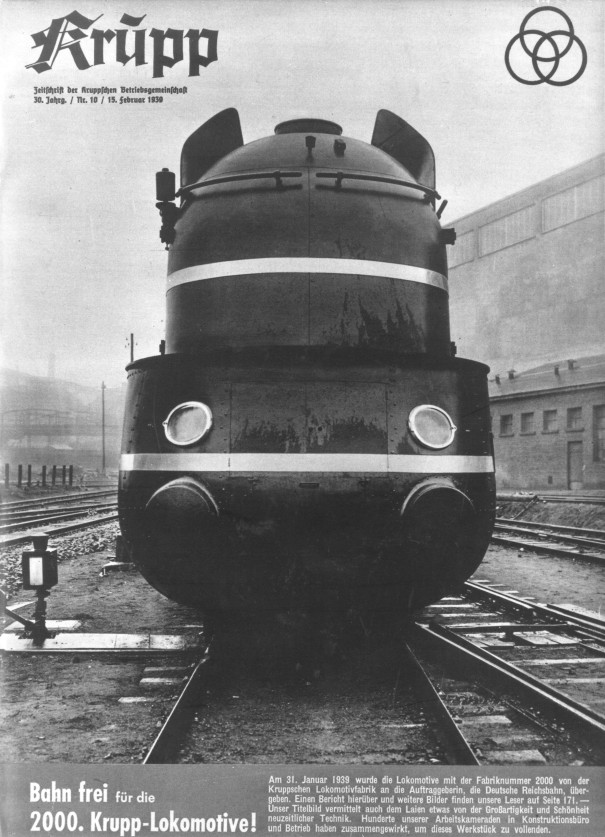Krupp - Changes in production

Streamlined D2 locomotive from the 06 series. This locomotive (Krupp factory number 2000) was delivered to Deutsche Reichsbahn in 1939.
During the First World War, armaments production increases to more than five times the pre-war level to meet government orders. After the end of the war, the Treaty of Versailles forbids the production of arms almost completely. Dismantling and production changeovers cause problems for Krupp, exacerbated by the general political and economic situation (occupation of the Ruhr, inflation). It takes many years before success is again achieved in the newly added production operations, e.g. the construction of locomotives, trucks, agricultural machinery and excavators. The group is stabilized by streamlining the manufacturing operations and expanding stainless steel production. In 1926 Krupp launches WIDIA carbide, representing a significant advance in tooling technology thanks to its hardness and wear resistance.
After 1933 Krupp is tied closely to the economic policies of the National Socialist regime. Increased demand for rolling mill products, primarily for highway construction, results in the expansion of the structural engineering shops in Rheinhausen. The construction of locomotives, trucks and ships is stepped up. In parallel with this, Krupp resumes arms production. At the end of 1943 Fried. Krupp AG is converted back to a sole proprietorship and transferred to the eldest son Alfried Krupp von Bohlen und Halbach (1907-1967). He takes over the company at a time when intervention in production by munitions authorities and semi-private control bodies is on the increase.
/thyssenkrupp_logo_claim_d.svg)